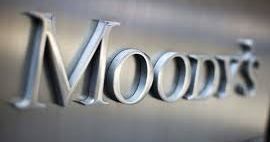 New Delhi, Oct 23: Global credit ratings agency Moody’s on Thursday pointed out that India is less exposed to external shocks due to its resilient growth and the policy reform momentum.
New Delhi, Oct 23: Global credit ratings agency Moody’s on Thursday pointed out that India is less exposed to external shocks due to its resilient growth and the policy reform momentum.
The global economic research firm placed its confidence on India’s ability to withstand global risk-aversion coupled with a slowdown in Chinese economy and subdued international trade in its report titled “Baa-rated Sovereigns: Diverging Resilience to Developing Global Risks”.
The report elaborated the impact of financial market turbulence on emerging markets over the past two years and highlighted the differing shock-absorption capacities among the five largest “Baa-rated” countries such as Turkey, Brazil, South Africa, India and Indonesia.
The report cited that India is found to be less exposed to external shocks than other sovereigns discussed in the report due to a positive outlook on its ‘Baa3 positive’ rating.
“The rating reflects our view that the relatively resilient growth and the policy reform momentum will slowly stabilise inflation, improve the regulatory environment, increase infrastructure investment and lower government debt ratios,” Moody’s Investors Service said.
“We forecast strong growth in India of around 7-7.5 percent per year in 2015-16, the highest growth rate among the G20 economies, which is supported by lower oil prices that will reinforce gradual growth-enhancing reforms.”
Besides, growth rate, the ratings agency said that the country’s significant monetary tightening in 2013, coupled with some fiscal consolidation restored macroeconomic stability, albeit at the expense of near-term growth.
“However, coupled with structural reforms to address regulatory and infrastructure weaknesses, lower inflation and current account deficit outcomes have set the pacefor monetary loosening which commenced in 2015,” the report said.
The CAD gauges the trade deficit, factor income and financial transfers such as interest earnings and foreign remittances.
India’s CAD was estimated at 0.8 percent of the gross domestic product (GDP) for 2015,which reflects the sharpest adjustment driven by low oil prices. India’s CAD has already improved to 1.2 percent of GDP in the quarter ending June, down from 4.8 percent in 2012.
India is one of the largest importers of crude oil in the world. It had imported 79-80 percent of itscrude oil needs, spending $138 billion last fiscal (2014-15). The lowering of crude oil prices is expected to help the country in firming up its finances.
“This active policy response to counter emerging risks contributed to the positive outlook we placed on India’s Baa3 rating earlier this year,” the report added.
